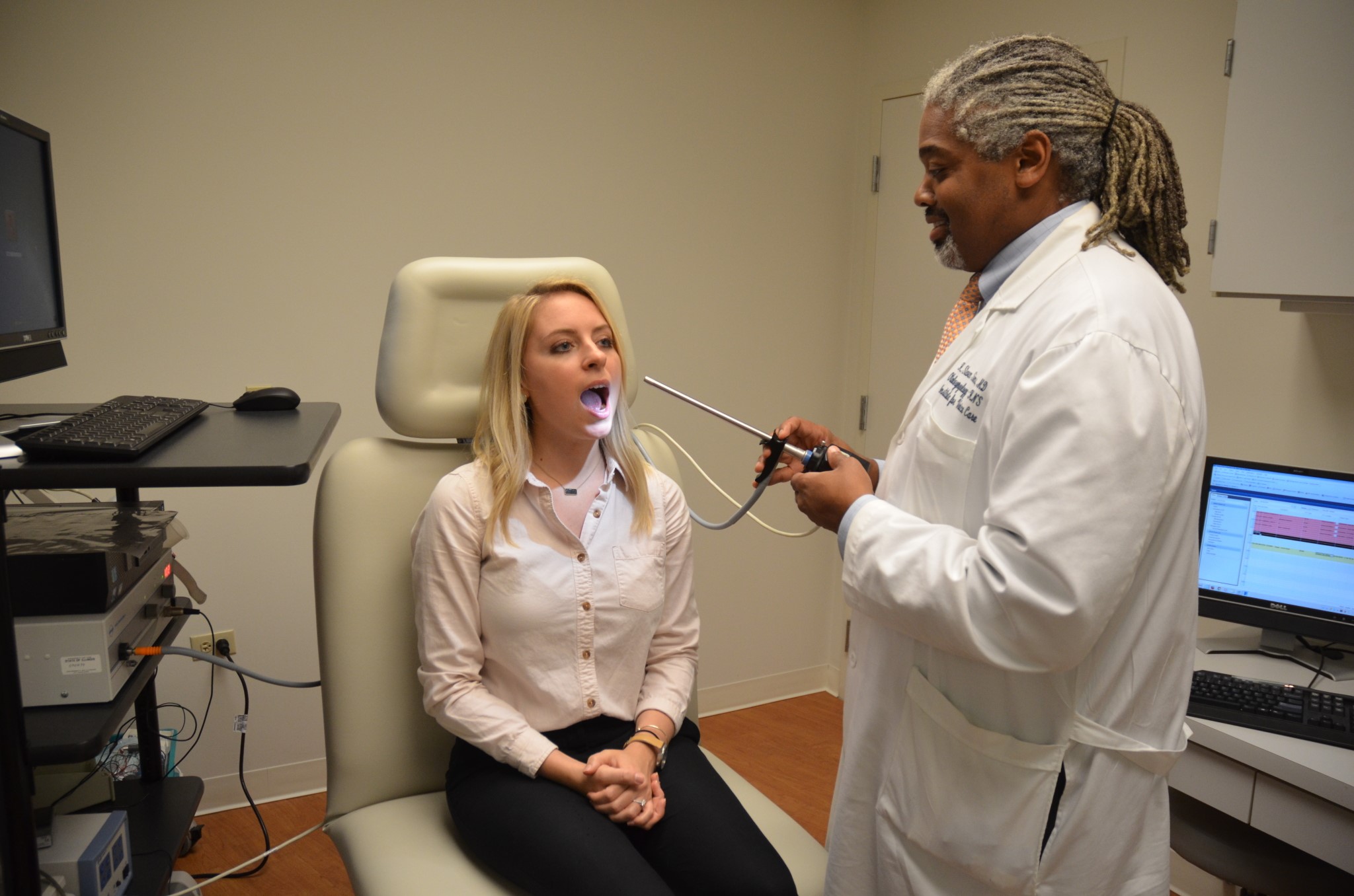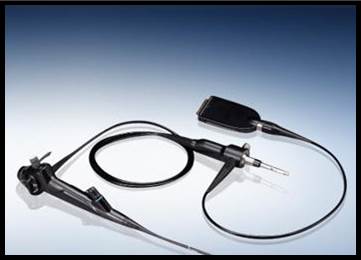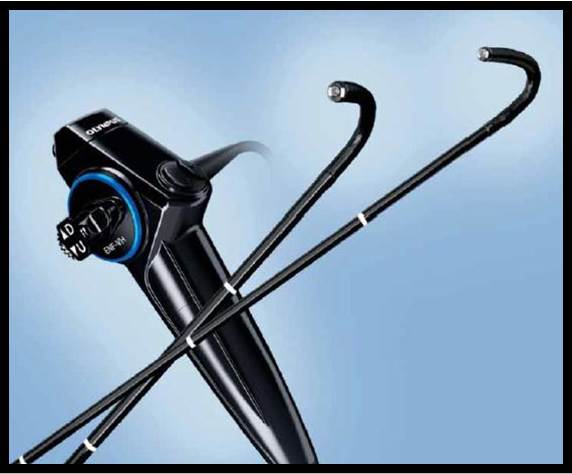Laryngoscopy

What is Laryngoscopy?
If you are coming to the Chicago Institute for Voice Care with a problem involving voice or swallowing issues, it's important to understand how we view and treat these types of conditions. Otolaryngologists, or ENTs (for Ear, Nose, and Throat physicians), are surgeons and use a range of scopes to treat vocal and swallowing issues in a minimally invasive way that typically promotes healing with faster recovery and less pain than through traditional open surgery. The primary way of detecting and diagnosing voice/swallowing issues is through a laryngoscope, which allows the ENT physician to look at the back of your throat. Procedures of this nature, known as laryngoscopy, are covered by most insurers, and usually are done in the doctor's office.
In laryngoscopy, the scope, a thin, flexible viewing tube, is passed through the nose and guided to the vocal folds, or larynx. A fiber optic cable permits the physician to directly inspect the nose, throat, and larynx for abnormalities. Recently, digital technology has been embedded in the scope to allow for smaller scopes with even clearer images. Laryngoscopy is typically performed using local anesthesia if necessary. A rigid scope can also be passed through the mouth to see the vocal folds with more light and a larger image. Both methods, flexible and rigid laryngoscopy, allow for visualization of the vocal folds, an essential information-gathering step that helps make a diagnosis and develop a treatment plan.
WHY IS LARYNGOSCOPY NECESSARY?
- To detect laryngeal abnormalities in the vocal folds or the area above or below including papillomas, nodules, cysts, polyps, webs, or other masses
- To (in some cases) help obtain a tissue biopsy to confirm suspected cancer of the larynx or assess the severity of a diagnosed cancer
- To help diagnose the cause of a persistent cough, hoarseness, throat pain, or a change in voice
- To better understand the potential causes for difficulty swallowing or a feeling of a lump in the throat
- To determine the cause of other voice problems, such as breathiness, weak voice, or loss of voice
- To insure the vocal folds are moving properly for normal speech and breathing
Flexible laryngoscopy can be done while the patient reads, speaks, or sings, to allow visualization of the voice box during a specific voice-related task.
WHAT SHOULD I EXPECT DURING FLEXIBLE LARYNGOSCOPY?
- You will sit upright in an exam chair in your doctor's office. Many patients can tolerate the newer, smaller scopes without any anesthesia. However, sometimes we will first decongest your nose with a spray, then administer a medicine that numbs the nose and makes the procedure more comfortable.
- For some people, the numbing can be difficult. Your teeth might numb too, because the roots of your teeth (where the nerves are) sit right below the nose.
- The doctor will gently insert the scope through one nostril then closely inspect your nose, throat, and larynx.
- Photographs/video may be taken with a tiny camera attached to the scope.
- This procedure usually takes 5 to 10 minutes, though the anesthetic may last up to an hour and wear off gradually.


WHAT YOU EXPERIENCE DURING RIGID LARYNGOSCOPY
- You will sit upright in the examination chair. You will be asked to lean forward as this helps bring the voice box (larynx) forward. You may even be asked to place your elbows on your knees to make it easier to see your larynx.
- The physician will gently hold your tongue and pass a rigid laryngoscope through your mouth over the tongue. The scope is angled so that it sees well ahead of where it is placed. This means that we don’t have to go that far in order to see your vocal folds. Some patients prefer to have a numbing spray that helps suppress the gag reflex in the back of their throat.
- Photographs and videos may be taken of the larynx with a tiny camera attached to the scope.
RESULTS OF LARYNGOSCOPY / VIDEOSTROBOSCOPY
- During the visual inspection of your mouth, throat, and larynx, the doctor will note any abnormalities and will replay the video to show you what was found. In some cases, this examination is sufficient to provide a diagnosis or at least sufficient to determine whether surgery is indicated.
- If tissue or fluid samples were taken, these may be sent to the lab for examination. For example, biopsied tissue may be inspected under a microscope for the presence of unusual cells, or may be cultured for infectious organisms. Results from these tests can take 1-2 weeks as we must wait for results before we have any information to give to the patient.
- Visualization of the larynx usually results in a definitive diagnosis, or it can at least rule out disorders that otherwise would require surgery. Depending on the diagnosis, you may be referred for surgery, speech therapy, and/or medication depending upon what is found.
- You will have the opportunity to receive photographs of the examination if you wish.